In-Browser Machine Learning (asanAI)
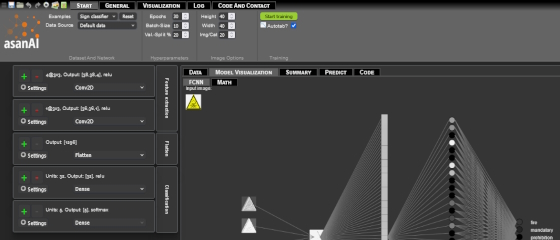
In-browser machine learning enhances user experience by enabling real-time data processing, improving performance, and ensuring privacy by keeping sensitive information local. It allows for offline functionality and personalization at the edge, making AI more accessible and interactive across various platforms.asanAI is an open-source, browser-based machine learning tool that allows users to experiment with AI models without any prior knowledge or programming skills. It enables the training of models using various data types, all within a user-friendly graphical interface.
Integrated HPC and ML Environment
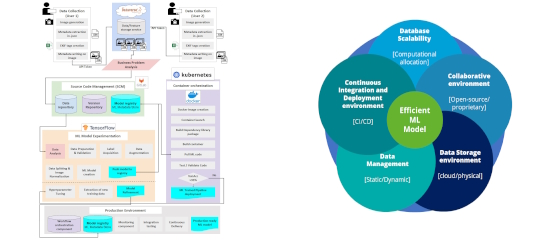
Machine learning has transitioned from an individualistic approach to a collaborative one, enabling the collective effort to address increasingly complex challenges as they arise. One challenge that emerges is the management of a collaborative development process in machine learning projects.This project creates a collaborative environment that leverages the benefits of a collaborative approach by orchestrating various Open Source tools. It establishes an optimal setting for code collaboration, model generation, data sharing, and the utilization of computational resources not limited to a single location.
Interaction between HPC, AI, and Data

This interaction is crucial for advancing scientific discovery and technological innovation by enabling the processing of vast datasets, enhancing model accuracy, and facilitating real-time analysis and decision-making. This synergy not only accelerates time-to-insight in complex scientific problems but also opens new frontiers for research applications, from improving data processing capabilities to revolutionizing fields like quantum computing and edge computing.This project aims to enhance data analytics and AI development by focusing on efficient data processing pipelines, optimized use of HPC resources for AI model training, and collaborative code development with FAIR data management practices.
Big Data Stream Processing

Stream processing for Big Data is increasingly vital as it enables real-time insights and decision-making, allowing organizations to respond swiftly to continuous data flows from various sources. Its efficiency, and ability to integrate with modern technologies make it essential for enhancing business value across diverse industries.This project conducts a comprehensive comparative analysis of existing data stream processing frameworks to identify their strengths, limitations, and performance characteristics in Big Data stream processing. Based on these insights, this project proposes a solution designed to enhance and complement current frameworks by introducing optimized I/O handling, and improved scalability.
Live Migration

Live migration remains a critical technology in modern computing, enabling seamless transfer of running virtual machines and containers between hosts with minimal disruption, which is essential for maintaining high availability, balancing workloads, and supporting dynamic resource allocation.This project aims to comprehensively investigate live migration capabilities across cloud and high-performance computing (HPC) environments, focusing on performance, reliability, and efficiency of migration techniques. By developing a sophisticated testbed and conducting rigorous experiments with diverse workloads, the project will evaluate and optimize live migration strategies. This approach seeks to address current challenges in maintaining service continuity and resource utilization in dynamic computing infrastructures.
Applications of SLLM and LLMs

SLLMs are highly effective in domain-specific tasks and resource-constrained environments, providing accurate responses in specialized fields while operating efficiently on devices with limited computational power.Their optimal operation however, requires precise steering and control. This project investigates various applications of SLLM and LLMs, their required adaptations, effective steering techniques, and performance improvement.
Temporal Named Entity Recognition
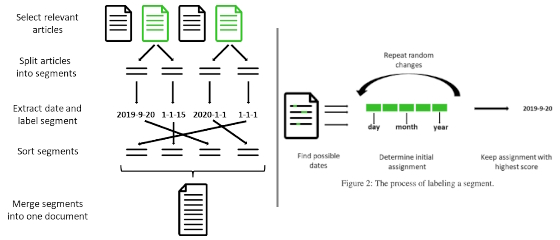
Temporal named entity recognition is crucial for extracting and understanding time-related information from text, enabling machines to accurately interpret dates, durations, and temporal expressions.This capability is essential for various applications such as event scheduling, historical data analysis, and natural language processing tasks that require temporal context, ultimately enhancing the ability of AI systems to comprehend and reason about time-based information in human communication.
Content-Aware Image Restoration

The project develops a modular pipeline for image restoration that leverages existing models, focusing on object-specific regeneration based on class labels. It offers users extensive control over the restoration process, allowing them to select models, customize steps, and enhance images with depth awareness. Additionally, the study presents two pathways for regeneration, facilitating a comparative analysis of their strengths and limitations while emphasizing flexibility to target specific object categories, such as medical images.
MRI Image Processing
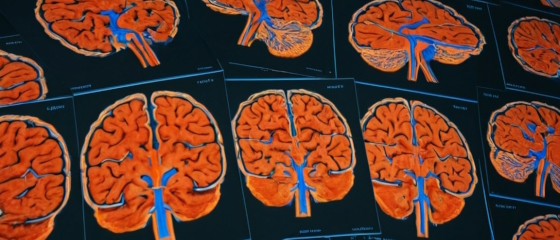
The project focuses on MRI image processing to accurately segment regions of interest (ROIs) in brain scans, which is essential for diagnosis and treatment planning. It employs advanced segmentation techniques, including preprocessing steps for noise reduction and bias correction, to enhance the identification of anatomical structures and pathological regions like tumors. The goal is to provide reliable tools that improve clinical outcomes by facilitating better analysis and visualization of critical areas within MRI images.
AI for Entomology

The project uses artificial intelligence to identify insects through image processing, enhancing species discovery and biodiversity monitoring. By crowdsourcing data collection, the project aims to analyze a comprehensive dataset of insect images. This innovative approach aims to automate insect classification, improving ecological research and conservation efforts while deepening our understanding of insect diversity and its ecological significance by leveraging citizen-science.
Behavior Prediction on HPC Systems
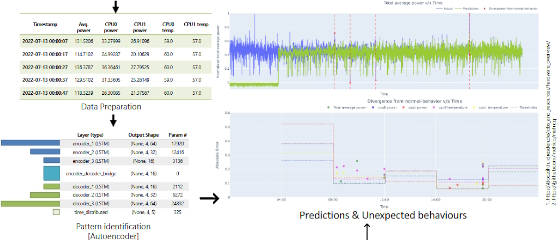
The increasing number of computing nodes in high-performance computers (HPC) raises concerns about potential failures, necessitating early detection and prediction to maintain continuous operation.This project investigates statistical and machine learning-based anomaly detection mechanisms using passively collected and anonymized system log entries.
Data Anonymization and Usefulness
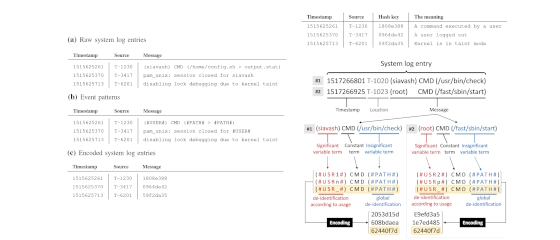
Monitoring data such as system logs are crucial for analyzing computing systems behavior, but their complexity and sensitive data raise privacy concerns, necessitating automated analysis methods. Traditional anonymization often reduces data usefulness, while content-aware techniques like PαRS preserve correlations. This project evaluates the effectiveness of anonymized system logs for behavioral analysis using various analysis methods.
Impact Force Estimation and Localization
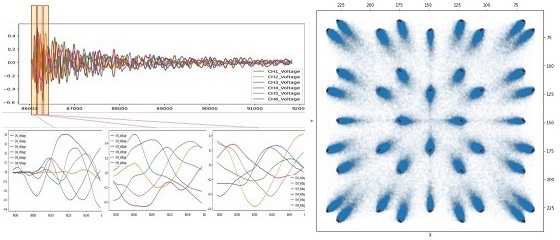
Impact force estimation and localization has diverse use cases in engineering, including Structural health monitoring, Material testing and optimization, Real-time process optimization, Safety improvements, and Soft robotics advancements.This project investigates the application of machine learning techniques to enhance the sensing precision and optimize the design of Tailored Embeddable Sensor-Actuator Layers (TEmSAL) in composite structures.
ML-Assissted Process Control

Scalability is a major challenge in additive manufacturing. A lack of automation in post-processing, material limitations, and a shortage of skilled professionals further contribute to this challenge. Due to the high costs and physical limitations, failures are common and can be costly.This project aims to enhance quality and consistency by utilizing ML to extend real-time monitoring and automate complex decision-making processes.
Lithium-Ion Battery Analysis

The shift towards renewable energy demanded effective energy storage solutions like Lithium Ion Batteries (LiBs). This project explores a data-driven approach to predicting configuration parameters of Lithium Ion Batteries using high-dimensional time-series data and various Machine Learning models. By transforming data into statistical measures and employing statistical techniques, the preliminary result shows a significant increase in prediction accuracy.
Touch Localization on Artificial Skin
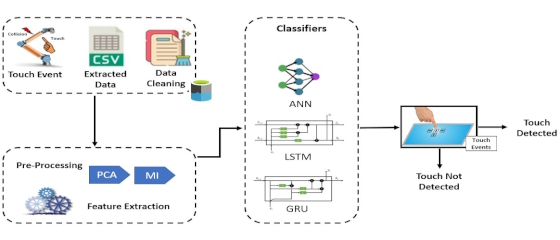
The project aims at developing a model that utilizes wearable tactile sensors to identify robot anomalies, such as touch and collision.This model employs deep learning techniques like CNN, LSTM, and ANN, and involves pre-processing touch event data to enhance accuracy through feature selection methods like PCA and MI, ultimately facilitating safe human-robot interactions by monitoring contact forces and ensuring effective risk assessment.
Pattern Detection in Time Series
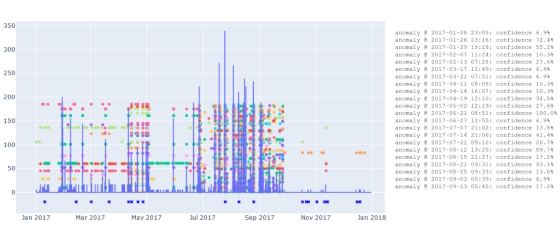
The identification of recurring sequences or trends within temporal data is crucial for various applications, including anomaly detection, forecasting, and understanding dynamic behaviors in fields such as finance, traffic analysis, and environmental monitoring. The project focuses on early detection of potential failures in computing clusters by analyzing power, temperature measurements, and system logs for anomalies using techniques like Suffix Arrays and deep learning-based Autoencoders.
Knowledge Graph Representations
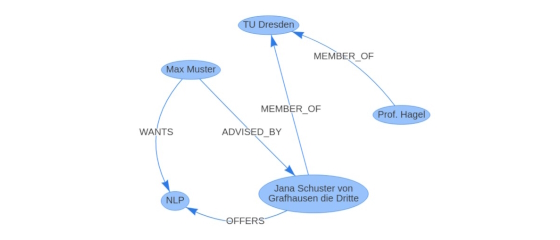
Knowledge Graph representation is vital for semantic understanding, information integration, and enhancing machine learning, as it allows for structured knowledge that facilitates reasoning and dynamic updates.The project investigates effective methodologies for KG representation, focusing on evaluating techniques, improving interoperability, addressing scalability challenges, and applying findings to real-world scenarios.
